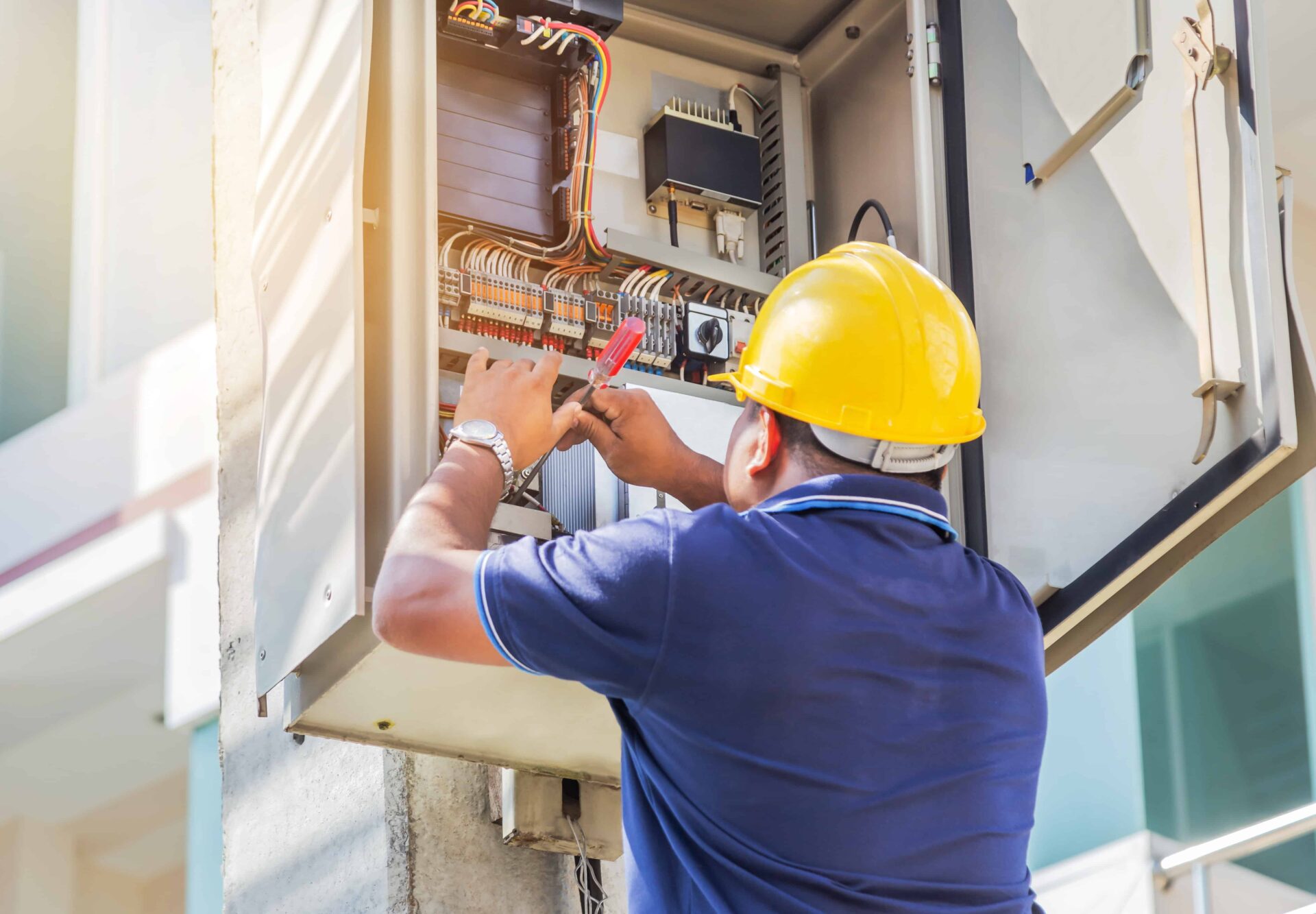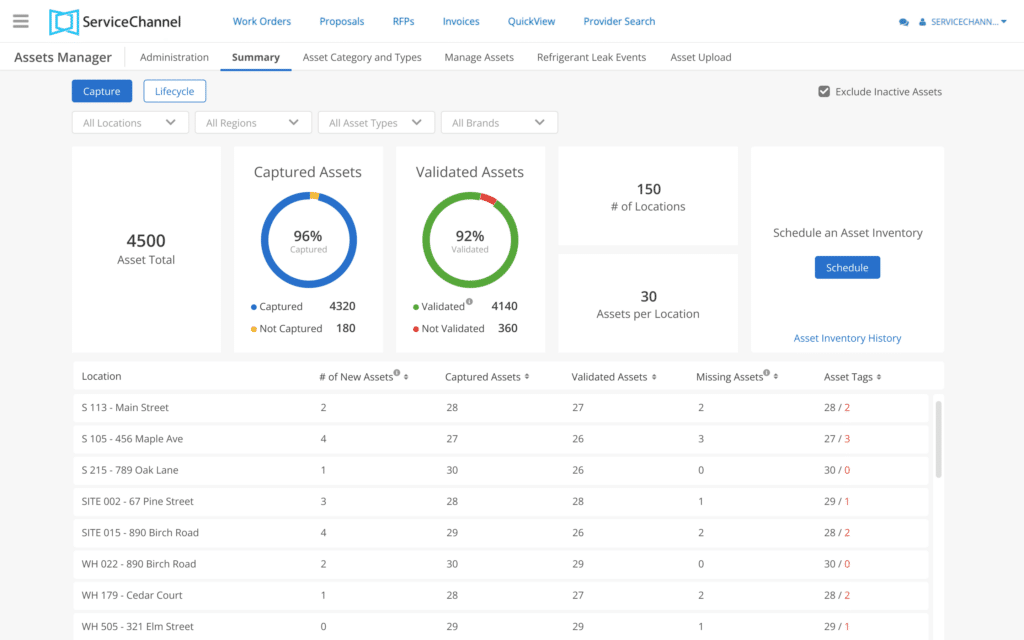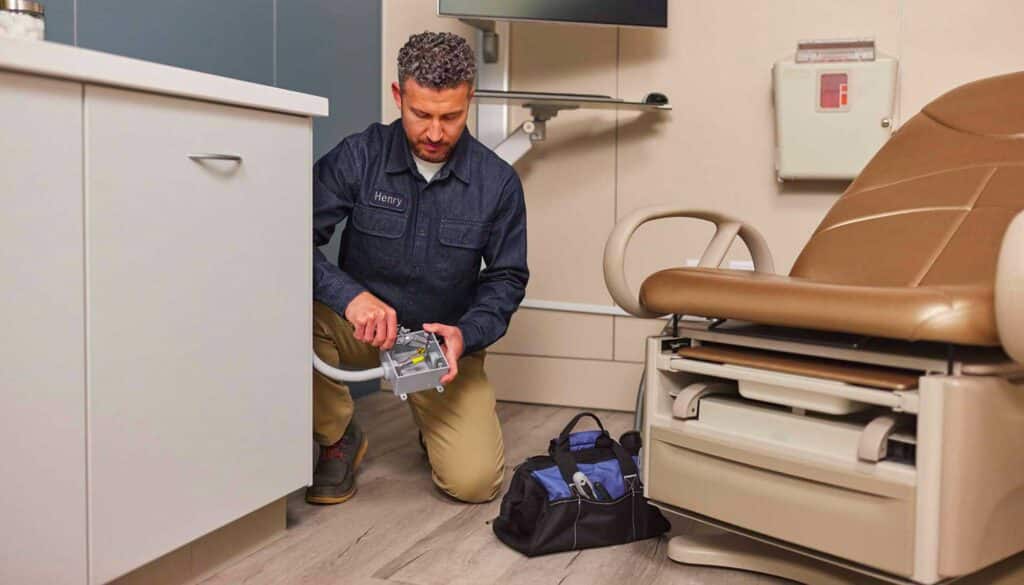Circuit Breaker Maintenance Checklist

This essential checklist for circuit breaker maintenance helps boost performance and prevent failures. Ensure system reliability and efficiency.
It’s critical to perform circuit breaker maintenance on a regular schedule to uphold the safety and integrity of your electrical systems. If a circuit breaker fails, you risk damage to electrical equipment, power outages, and fires. Regular inspections and testing can help prevent these risks by ensuring your industrial circuit breakers function properly.
Proper maintenance for a circuit breaker involves more than simply inspecting and testing your system. Compared to other industrial equipment, very little maintenance is involved in keeping your circuit breaker in good condition. However, very little maintenance doesn’t mean any, and this can vary based on your electrical system and environmental conditions.
Understanding Circuit Breakers
A circuit breaker is a switch that protects an electrical circuit from harm due to surges or short circuits. These protective devices automatically stop the flow of electricity when they detect a problem. This action helps prevent overheating, which could cause fires or damage electrical devices.
Their ability to be reset after tripping also provides an effective and convenient way to address electrical faults without constantly replacing fuses.
Types of Circuit Breakers
Various circuit breakers are designed for different applications and voltage levels. The primary ones include the following.
- Magnetic circuit breakers use an electromagnet to cut the power when the current exceeds a certain level.
- Thermal circuit breakers are temperature-sensitive devices that interrupt the circuit based on heat generated by excessive electrical current.
- Thermal-magnetic circuit breakers combine both thermal and magnetic methods to provide dual protection against overcurrent and overheating.
- Ground fault circuit interrupters (GFCIs) shut off the circuit when they detect a difference in current between two conductors.
- Arc fault circuit interrupters (AFCIs) stop the electrical current when they detect dangerous electrical arcs.
- Draw-out circuit breakers allow for easy removal and insertion without the need to disconnect the circuit. This feature facilitates easier maintenance, testing, and replacement operations.
How Circuit Breakers Work
Circuit breakers work by detecting abnormal current flow and tripping to interrupt the circuit. When a trip occurs, the breaker stops electricity from flowing through the electrical connections. Electrical equipment that relies on a power supply will shut down. This shutdown may seem inconvenient, but it happens to protect the affected devices from harm.
Different breakers have different operating mechanisms to detect when an abnormal current occurs.
Tasks for Circuit Breaker Maintenance
1. Visual Inspection
Performing a visual inspection is a good way to identify physical problems before conducting electrical tests on the circuit breaker parts. One of the benefits of preventive maintenance is that it’s easy to detect these physical issues before calling in specific professionals.
Check for cracks, casing damage, and signs of overheating, such as discoloration or melted components.
2. Electrical Testing
Electrical tests consist of the insulation resistance test, the contact resistance test, the over-potential (hi-pot) test, and the circuit breaker timing test. Each serves a specific purpose.
- The insulation resistance test measures the resistance of electrical insulation to ensure it can effectively separate electrical conductors.
- The contact resistance test checks the resistance of electrical connections to confirm low resistance and high conductivity.
- The over-potential (hi-pot) test applies high voltage to equipment to verify insulation strength and detect any weaknesses.
- The circuit breaker timing test assesses a circuit breaker’s opening and closing times to ensure it operates within specified time frames.
Routine trip testing is also needed to ensure that the breaker trips when it should.
3. Lubrication and Cleaning
Lubricate all moving key components and clean contacts to ensure optimal performance. This step is crucial for oil circuit breakers because they rely on oil to extinguish the arc generated during the interrupting process.
To clean circuit breaker contacts effectively, direct a high-pressure air blast over them. The force of the air removes dirt, dust, and other contaminants from the surface of the contacts.
4. Calibration and Adjustment
Calibrate settings to ensure that the circuit breaker operates in the proper sequence. The correct sequence means the device will accurately detect faults and initiate the trip mechanism at the correct moment.
It’s also important to adjust the mechanisms of the interrupting structure if needed. This structure must work perfectly to separate contacts and stop current during an overload or short circuit.
5. Documentation and Record-Keeping
Any facilities management checklist needs accurate documentation and good record-keeping. Record whenever a regular inspection occurs and what was detected. Having these records will give maintenance personnel the needed background knowledge for the next mechanical inspection.
Common Circuit Breaker Problems and Solutions
Overloads
Overloads occur when the current exceeds the circuit’s capacity. Unplug devices, check for short circuits, and redistribute loads if an overload occurs. Regular maintenance of the power system can prevent these issues from happening in the first place.
Short-Circuiting
Short circuits happen when hot and neutral wires touch and cause a high current flow. Identify and fix the root cause to prevent damage. Both high-voltage and low-voltage power systems face risks from short circuits, including overheating, fires, and equipment failure. If not corrected quickly, these issues can harm a range of different equipment.
Miswiring
Miswiring can cause flickering lights, system shutdowns, and safety hazards. Attempting to correct miswiring without proper knowledge can worsen the situation and increase your risk of injury. Call a professional electrician for inspection and repairs unless you have the correct training.
Buzzing Noises
Buzzing noises indicate wiring problems or overloads that need immediate attention. Buzzing noises can also suggest issues with the trip coil, loose terminal connections, or faulty stationary contacts within the circuit breaker. Call your maintenance staff or an electrician to diagnose and resolve the issue.
Advanced Circuit Breaker Maintenance Techniques
Thermal Imaging
Thermal imaging, also known as infrared thermography, is a non-destructive testing method to detect electrical device anomalies. This process captures the heat signatures emitted by the device using a thermal imaging camera. By analyzing these images, you can identify irregular heat patterns that may indicate overheating components.
Vibration Analysis
Vibration analysis is a predictive maintenance technique used to assess the mechanical condition of machinery and equipment. Circuit breaker maintenance includes this process to test for issues like wear or primary components not being aligned correctly.
Oil Analysis
Oil analysis is a diagnostic technique commonly used in power transformers but can also be applied to circuit breakers with oil-filled components. This analysis helps identify any contaminants or irregularities in the oil, which directly affect the insulation properties and cooling performance of these components.
Best Practices for Circuit Breaker Maintenance
Frequency of Maintenance
High-voltage circuit breakers should be inspected every six to 12 months, while medium-voltage circuit breakers should undergo maintenance annually or after every 2,000 operations. Ensure that these varying time frames are accounted for in your routine maintenance program if you utilize multiple types of power circuit breakers.
Follow the Manufacturer’s Guidelines
Breaker manufacturers provide specific guidelines and recommendations for the routine maintenance of their circuit breakers. It’s important to add general circuit breaker maintenance tasks to your preventive maintenance plan. However, these general tasks cannot override the manufacturer’s specific requirements.
Implement Predictive Maintenance Technologies
Predictive maintenance technologies, such as infrared thermography and online monitoring systems, can help detect early signs of potential issues in circuit breakers. Early detection is key to preventing any operating mechanism from breaking down.
Monitor Environmental Conditions
Environmental factors, such as temperature, humidity, and contamination, can impact the performance and lifespan of circuit breakers. For instance, environmental wear can cause casing breaks in molded case circuit breakers. This damage can lead to costly electrical failures.
Minimize Risks with Preventive Maintenance
Whatever you need to do in your circuit breaker maintenance program, choosing the right types of preventive maintenance is your first step. Once you know how to schedule your maintenance program, the right software can make everything else easy.
ServiceChannel offers preventive maintenance software for your circuit breaker maintenance needs. Whether your electrical system runs on high-, medium-, or low-voltage breakers, we can help you ensure that all routine maintenance tasks are performed at the right time.
Let’s Get Started
Ready to kickstart your maintenance program?
Tell us about your situation and we’ll help plan a preventive solution that hits your goals.



